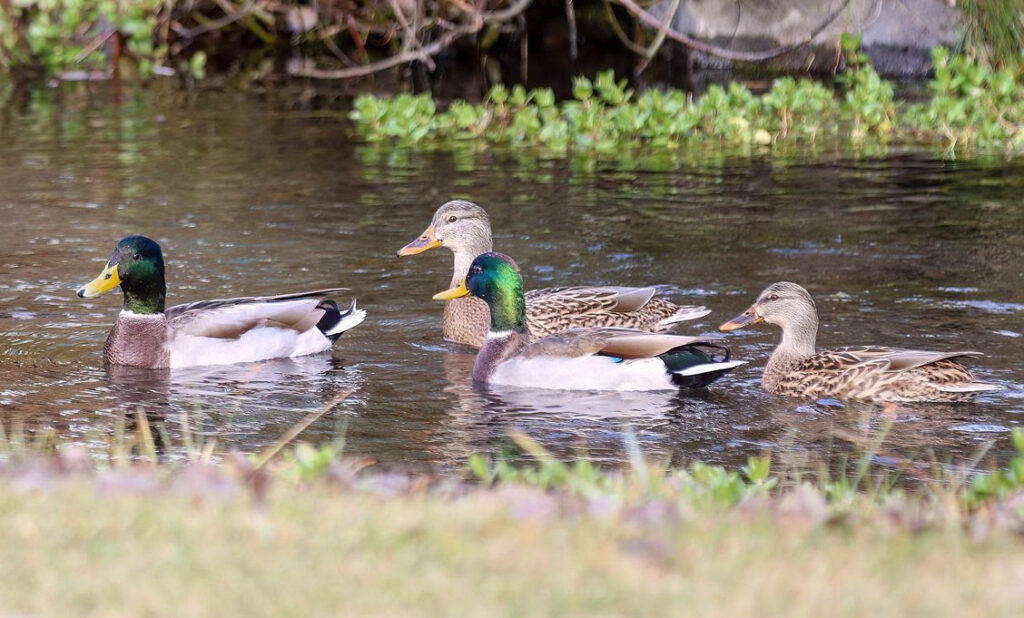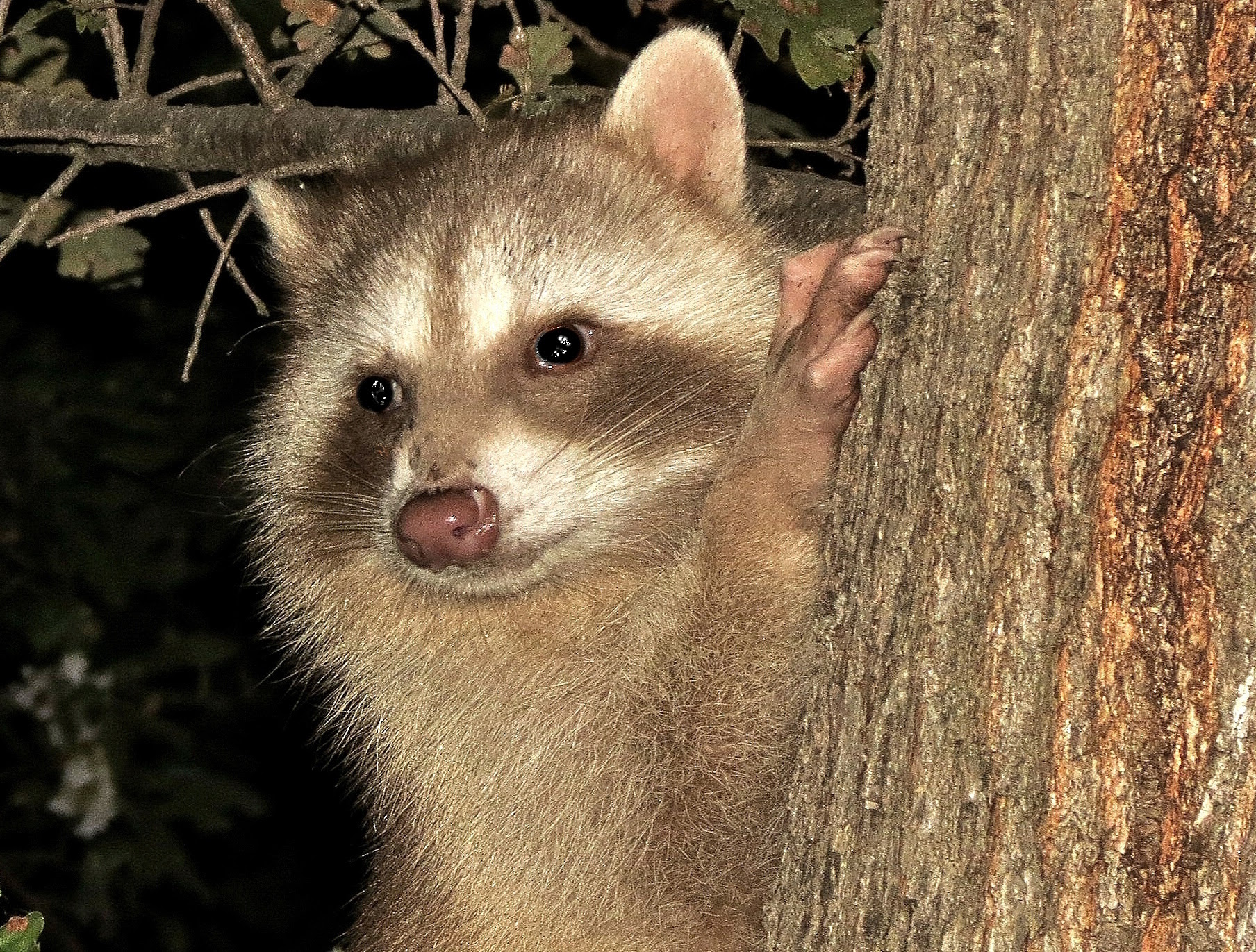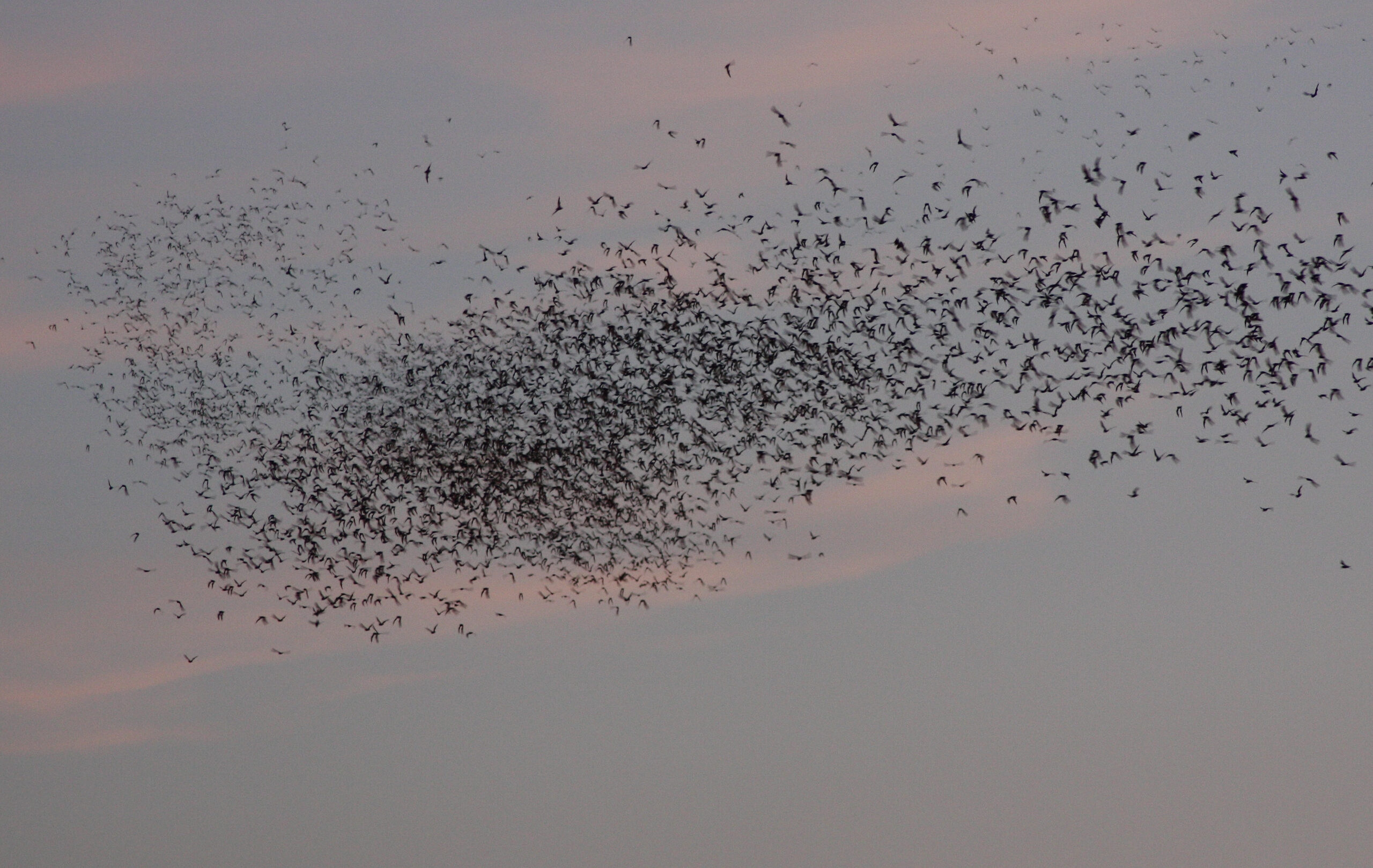| The mallard (Anas platyrhynchos) is the most recognized and numerous duck in the United States. Mallards are native to much of North America, Europe, and Asia, making it the world’s most widespread duck as well. It has been introduced to Australia, New Zealand, South Africa, and parts of South America. Male mallards have iridescent green head feathers, a white ring on the neck, and a brown breast; females are mottled brown all over. Both sexes have an iridescent blue patch, edged by white, on their wings. Mallards are dabbling ducks, foraging for seeds, stems, roots, and tubers of aquatic plants, as well as insects, crustaceans, worms, and other small animals from the bottom of ponds and other wetlands. The female mallard (hen or suzy) makes the familiar deep quack that starts loudly and becomes softer; a male mallard (drake or greenhead) makes a quieter, raspy sound. |
 |
| Since 1948, California Department of Fish and Wildlife biologists have been conducting surveys of ducks in areas of California where most waterfowl nesting occurs, such as wetlands and agricultural fields in the northeastern part of the state, the Central Valley, Suisun marsh, and coastal valleys. Mallards are California’s largest breeding population of ducks, generally followed by gadwall and cinnamon teal. About 380,000 ducks of all kinds nested in California in 2022, 30% below the long-term average. The breeding population of mallards in 2022 was about 180,000, which was well below their long-term average of 330,000. Breeding and wintering mallards have generally declined since the mid-1990s (Feldheim, C. 2018. Calif. Fish and Game 104:49-66). In 1999, after a very wet El Niño year, there were over 560,000 breeding mallards. The recent decline of nesting ducks is attributed to California’s long-term drought. Mallards pair in the fall and stay together until the female lays eggs (an average of nine) in the spring. Nests are well-hidden bowls on the ground, lined with vegetation and down from the mother. Only the female incubates the eggs and takes care of the ducklings. It is claimed the unhatched mallards make sounds while still in the egg, which help in the synchronization of hatching. This may be necessary because the hen immediately leads her young to the safety of water after they hatch. California mallards are either sedentary or short to medium-distance migrants. Those that nest in Suisun Marsh and Sacramento Valley may migrate to the Klamath Basin in Oregon not to seek a favorable climate, but to spend a few weeks among dense cattails for security during molting, a period of time when they can’t fly and are extremely vulnerable to predation. Mallards in other areas migrate to warmer areas for the winter in established flyways. They are strong fliers, clocked at 51 miles per hour, among the fastest flying ducks (McDuie, F., et al. 2019. Wildlife Res. 46:533-543). While mallards generally fly below 4,000 feet, a commercial airliner flying over Nevada struck a mallard at 21,000 feet. The pilot and passengers felt the collision and there was an identifiable feather stuck in a tear in the dent (Manville, R. 1963. Wilson Bull. 75:92). While some mallards breed in the Yolo Bypass, the Wildlife Area is managed for wintering birds by drawing down water in spring to favor seed-producing plants that feed winter migrants. This management scenario is not optimal for breeding ducks. Most domestic duck breeds are descendants of the mallard (the Muscovy duck is another domestic species). There are many recognized breeds of domestic mallards as well as highly variable offspring of wild and domesticated mallard parents. A mallard that has some genes from a domestic breed may look like a wild mallard or may be lighter, darker, smaller, or larger. If a duck approaches you for food, you can almost be certain it has domestic duck in its ancestry. Among the domesticated mallard breeds, the Pekin duck is the most popular breed in the U.S. It is all white with an orange bill and orange feet (think Donald Duck). Pekin ducks can’t fly because of their heavy weight. The Rouen breed looks like a wild mallard but is heavier and can barely fly. Indian runners are long, tall, lean ducks that come in a variety of colors. Mallards crossbreed with many other duck species, resulting in fertile hybrid offspring which can breed, polluting wild gene pools of other species. In some areas, mallards are considered an invasive pest because of this. For example, mallards are threatening South Africa’s duck diversity by breeding with endemic ducks such as the Cape teal, yellow-billed duck, and others. In New Zealand, non-native mallards breed with native Pacific black ducks to such an extent that in some areas, hybrids are more common than pure-bred Pacific black ducks. Closer to home, mallards sometimes interbreed with the American black duck, mottled duck, Hawaiian duck, Mexican duck, northern pintail, and others, resulting in hybrids that dilute the genetic integrity of wild species. In addition, in some areas there is significant mixing of wild and domesticated mallards. Avian influenza, also known as bird flu, is caused by a virus that spreads among wild waterfowl worldwide. It infects domestic poultry with terrible consequences. Although the bird flu viruses do not normally infect humans, human infections by the highly pathogenic strain H5N1 have occurred. In 2022, H5N1 ravaged chicken farms in the U.S. Unlike the previous outbreak of avian flu in 2015, the one in 2022 is thought to have originated in wild birds migrating in the Central and Mississippi Flyways. Wild waterfowl carry the virus but may show no symptoms. Mallards often come under scrutiny because they are common, widespread, migratory, and have a degree of tolerance to human-altered environments. Asymptomatic ducks shed the flu virus through their saliva and feces. Avian flu on a chicken farm (layers are more susceptible than broilers) can kill 90% to 100% of the chickens within 48 hours. Since early 2022, almost 53 million birds in the U.S. have died from avian flu or have been culled (killed) due to exposure to infected birds. Although the risk to the general public from avian flu is low, it is a concern. In 2022, three birds, a red-tailed hawk, Canada goose, and cinnamon teal, with H5N1 were detected in Yolo County, a reminder that dead or sick birds should not be handled. Because of a large natural reservoir of the virus and the discovery that only a few mutations could result in a strain that might allow airborne transmission between mammals, there are concerns about a potential pandemic. The first detection of the virus in a wild mammal in California was in a bobcat, whose remains were collected in Butte County on December 23, 2022. The bobcat may have been exposed to the virus while feeding on infected birds. To protect humans from an outbreak, several H5N1 vaccines have been developed and stockpiled for use in an emergency. |




